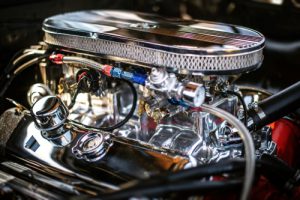Introduction
The automotive industry is witnessing a silent revolution. Titanium, the lightweight yet robust metal, is reshaping vehicles and various benefits. Titanium is integrated into a range of automotive designs. These components range from structural components to critical parts within the engine, and they are ushering in a new era of performance, efficiency, and durability.

This article is going to explore the uses of titanium in cars. Hope that you can have a better understanding of the features and applications of titanium.
Titanium: Properties and Benefits
Titanium boasts an impressive array of properties.
- Its exceptional strength-to-weight ratio stands out. It is about half the weight of steel. Meanwhile, it exhibits similar or even greater strength.
- Additionally, titanium is highly corrosion-resistant and able to withstand harsh environments, including exposure to saltwater, acids, and extreme temperatures.
- Its biocompatibility is another standout feature. Thus, it is used in medical implants like artificial joints and dental implants without triggering adverse reactions in the human body.
Related reading: How Titanium Alloy is Used in These 4 Industries Today?
Titanium’s Vital Role in Components
–Chassis and Structural Elements
At the core of vehicle design lies the chassis. It is the structural framework that defines a car’s integrity. Here, titanium plays a crucial role. It has high strength and remarkable corrosion resistance, so it has become an ideal candidate for structural elements.
Titanium alloys are employed in the chassis. They contribute to reduced weight and maintain structural rigidity. This translates to enhanced agility, better handling, and improved fuel efficiency without compromising safety.
–Engine Components
The heart of every vehicle, the engine, benefits immensely from titanium. Titanium possesses an excellent strength-to-weight ratio.
In valves, camshafts, and connecting rods, these parts endure high stress and greatly reduce mass. This not only enhances engine performance and power output but also contributes to fuel economy.
–Exhaust Systems
The demanding environment of exhaust systems is exposed to high temperatures and corrosive gases. So, they require materials that can withstand extreme conditions. Titanium’s heat resistance and exceptional corrosion resistance make it a natural choice.
Utilized in exhaust pipes and mufflers, titanium not only ensures longevity but also improves exhaust flow, reducing backpressure and boosting engine efficiency.
Benefits beyond Components
–Weight Reduction and Efficiency
The primary advantage of integrating titanium is its ability to reduce weight without compromising strength. Every kilogram shed in vehicle weight results in improved fuel efficiency and performance.
By substituting heavier materials with titanium in critical components, automakers achieve this delicate balance between durability and weight, and they can enhance vehicle efficiency and reduce emissions.
–Durability and Corrosion Resistance
Titanium’s inherent resistance to corrosion ensures a longer lifespan for automotive components. That works particularly well in regions prone to harsh weather or corrosive environments.
This durability translates into reduced maintenance and replacement costs. It leads to both economic and environmental benefits.
–Advancements in Safety
There are diverse titanium-made safety-critical components, such as airbag housings and crash structures. They significantly enhance vehicle safety.
They can withstand impact and maintain structural integrity during collisions. So, they improve occupant protection, contribute to higher safety ratings, and reduce the severity of injuries in accidents.
The Future of Titanium in Cars
As automotive technology advances, so does the potential of titanium. Ongoing research focuses on refining titanium alloys, explores novel manufacturing techniques, and expands its application scope.
In the context of electric and autonomous vehicles, titanium’s role continues to evolve. These advanced components contribute to the development of lightweight, high-performance components, and advancing safety standards.
Conclusion: Shaping the Automotive Landscape
Titanium’s integration into the automotive realm is a fundamental shift towards innovation and progress. It’s pushing the boundaries of performance, efficiency, and safety. As automakers continue to harness their capabilities, titanium remains a cornerstone in the automotive industry with enhanced performance, sustainability, and technological excellence.
Stanford Advanced Materials (SAM) stands as a global supplier of titanium products. SAM’s inventory spans beyond just wire. It includes pure titanium and titanium alloys in the form of wire mesh, tubes, plates, rods, and more. SAM also caters to the specialized needs of industries worldwide. Send us an inquiry if you are interested.